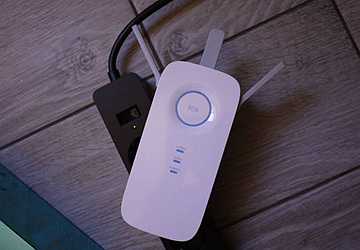8 Effective Ways to Boost Your Wi-Fi Signal at Home
Ever tried streaming your favorite show only to have it buffer endlessly? Or maybe you've been in the middle of an important video call when your connection suddenly drops. Frustrating, isn't it?
These Wi-Fi dead zones aren't just inconveniences; they can disrupt our work, leisure, and even our peace of mind.
After all, in today's connected world, seamless internet access is almost a necessity. We understand the frustration of having unreliable Wi-Fi at home, and that's why we're here to help.
Don't worry. This article helps you to find the eight effective ways to boost your Wi-Fi signal at home and say goodbye to dead zones.
Let's get started!
8 Ways to Boost Wi-Fi Signal
In the digital age, a strong Wi-Fi signal has become as essential as electricity or running water.
Given its crucial role, understanding the importance of boosting the Wi-Fi signal and removing dead zones is vital for an uninterrupted digital experience.
1. Optimize Router Placement
The location of your router plays a massive role in Wi-Fi signal strength. If you've stashed it away in a corner or closet, you're doing yourself a disservice.
For multi-story homes, place the router on the upper floor. Keep it away from other electronic devices and large metal objects which can interfere with the signal.
Things to Keep in Mind?
● Mount it on the wall for a more elevated position.
● Avoid placing it near windows to minimize signal leakage outside.
● Central and elevated router position is optimal.
● Avoid interference from other devices.
● Wall mounting can be beneficial.
To truly experience a world without dead zones, start with the position of your router.
2. Upgrade Your Antenna
The default antennas on many routers might not be the most powerful. Consider an upgrade. A high-gain antenna can boost the signal strength and range of your Wi-Fi.
When purchasing, look for antennas with higher dBi ratings. This represents the antenna's power.
Things to Keep in Mind?
● Ensure compatibility with your router model.
● Position the antenna upright for a more consistent signal.
● High-gain antennas can extend range.
● Check compatibility before purchasing.
● Optimal positioning can further enhance results.
Don't underestimate the difference an antenna can make. A simple change can lead to significant improvements.

3. Use a Wi-Fi Extender
For homes with multiple floors or thicker walls, a Wi-Fi extender can be a game-changer.
These devices capture and rebroadcast the Wi-Fi signal, expanding coverage to areas that were previously dead zones.
Things to Keep in Mind?
● Ensure your extender is compatible with your router's frequency band.
● Regularly update the firmware to maintain optimal performance.
● Extenders increase Wi-Fi coverage.
● Positioning is crucial for effectiveness.
● Stay updated on firmware.
A Wi-Fi extender is a practical solution for those tricky areas that just can't catch a strong signal.
4. Update Your Router's Firmware
Your router's performance can significantly improve with regular firmware updates. Updated firmware often includes enhancements for speed, security, and functionality.
Check your router manufacturer's website regularly for updates or set up automatic updates if available.
Things to Keep in Mind?
● Always back up your router settings before updating.
● Opt for wired connections during the update process to prevent interruptions.
● Regular checks are crucial.
● Safeguard your settings and ensure a stable update process.
Keeping your router's firmware updated can offer surprising improvements in your Wi-Fi’s overall performance.

5. Choose the Right Wireless Channel
In busy neighborhoods or apartment complexes, the airwaves can get crowded. Many routers are set to auto-select a channel, but this doesn’t always pick the least congested one.
Use a Wi-Fi analyzer tool to see which channels are least crowded in your area and adjust your router settings accordingly.
Things to Keep in Mind?
● Channels 1, 6, and 11 are typically the most separate on a 2.4 GHz band, reducing interference.
● For 5 GHz bands, the higher channels often have less interference.
● Crowded channels can disrupt Wi-Fi performance.
● Wi-Fi analyzers provide insights into channel congestion.
● Ensure you select a channel with minimal interference.
Changing your wireless channel can be like finding a clear path in a traffic jam, enabling smoother and faster connections.
6. Limit Bandwidth-Hogging Applications
Some applications on your devices can consume a significant amount of bandwidth, causing slower speeds for other devices.
Controlling bandwidth ensures a smoother online experience, especially during streaming or gaming. Use Quality of Service (QoS) settings on your router to prioritize certain applications over others.
Things to Keep in Mind?
● Prioritize real-time applications like video calls or online gaming.
● Set lower priority for background tasks like downloads or cloud backups.
● Not all applications need maximum bandwidth.
● QoS settings help manage data flow.
● Proper prioritization ensures essential tasks get the bandwidth they need.
By actively managing bandwidth, you ensure that critical tasks always get the speed and stability they require.
7. Secure Your Wi-Fi Network
Unauthorized users can leech off your Wi-Fi, causing noticeable slowdowns. A secure network ensures consistent speeds and protects against potential threats.
Use strong encryption methods (like WPA3) and regularly change your Wi-Fi password.
Things to Keep in Mind?
● Avoid default usernames and passwords.
● Regularly check for unfamiliar devices connected to your network.
● Encryption methods like WPA3 are top-notch for security.
● Regular password changes deter unauthorized access.
● Monitoring connections keeps your network safe.
A protected Wi-Fi network not only maintains speed but also ensures peace of mind.
8. Consider a Mesh Wi-Fi System
Traditional routers can sometimes struggle to cover larger homes. A mesh Wi-Fi system consists of multiple nodes placed around your home, creating a 'mesh' of coverage.
Place the nodes strategically, ensuring they're close enough for optimal connection but spread out enough to cover the area.
Things to Keep in Mind?
● Avoid placing nodes near large metal objects or electronic devices.
● Ensure all nodes are updated regularly.
● Mesh systems are perfect for larger homes or complex layouts.
● Strategic placement ensures a seamless network.
● Regular updates are vital for mesh node performance.
With a mesh Wi-Fi system, every inch of your home can enjoy robust and reliable connectivity.
Conclusion
Boosting your home Wi-Fi isn’t about complex solutions; it’s about the right solutions.
The strategies highlighted above are practical and effective and can be implemented without expert knowledge.
Imagine a home where every corner is Wi-Fi friendly, where buffering is a thing of the past. Now, stop imagining and make it a reality!
Ready to supercharge your home Wi-Fi? Starting today!